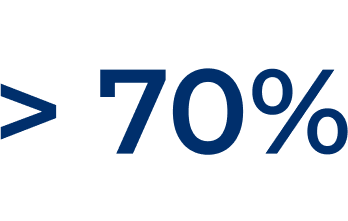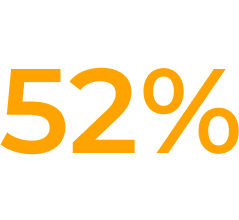



* Cross-sectional survey design study was conducted using validated instruments to assess physical, emotional, and socioeconomic burden of NMOSD on QoL among 193 patients.1
† n = 100/193.1† Each determinant represents the mean on a scale of 1–5, 1–6, or 1–10. The higher the mean score on the scale, the more the patient perceived NMOSD has impacted that particular aspect of their life.11
28% of patients living with NMOSD report experiencing moderate–to–severe depression.*6

healthcare professional
